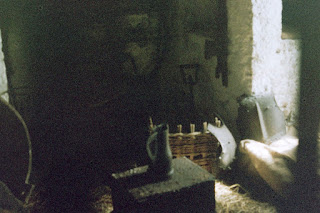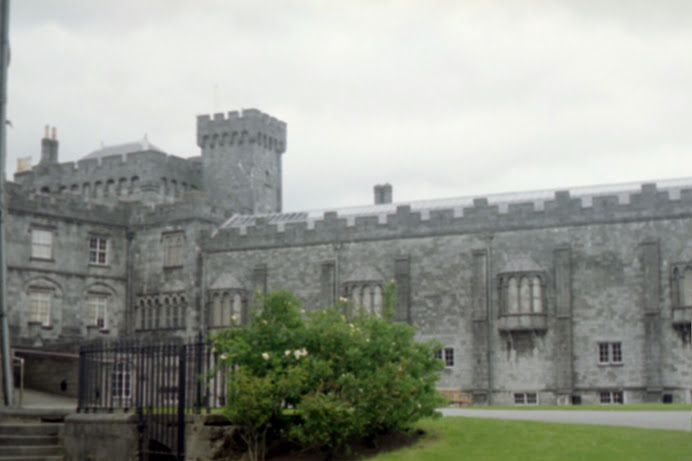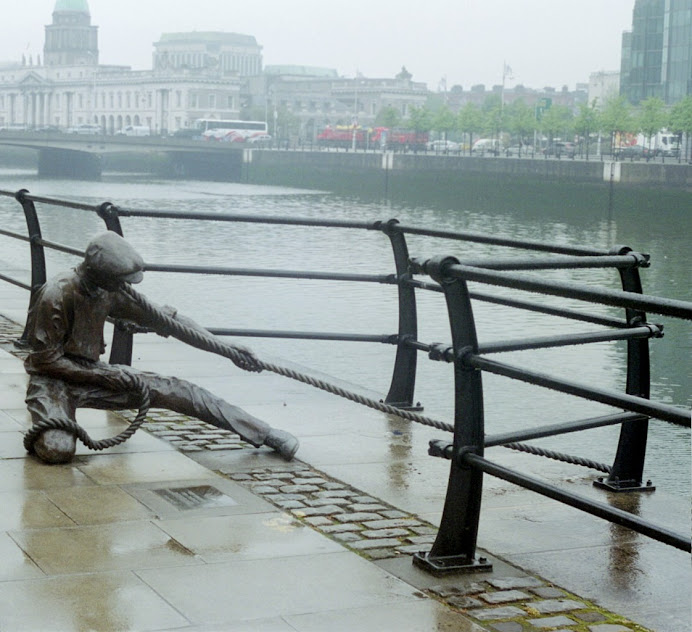When you think of visiting Ireland you likely picture the
lush green terrain quite likely with a stone wall or even a one of Ireland’s
most popular tourist attractions, a castle.
Ireland is home to numerous castles and castle ruins, some truly iconic –
like Blarney Castle, and others lesser known but all part of a rich history.
On Day 4 of our tour we’ll stop at two
ancient castles, the first being the Rock of Cashel. This ancient fortress was donated to the
Catholic Church at the start of the 12th century by the King of
Munster, so it is often thought of more as a religious monument than a
castle.
The oldest and tallest part of the castle,
as with many Irish castles, is the 90 foot tall round tower. Cormac’s Chapel dates from the 12th
century and features vaulted ceilings, decorative carvings over the doorways
and remnants of multiple frescoes. A
cathedral built in the 13th century and the Hall of the Vicars built
in the 15th century add to the grandeur of the Rock of Cashel. The museum and a short film will offer more
background on the Rock of Cashel’s history.
Our second castle stop on Day 4 is the
famous Blarney Castle. Though most
famous for the tradition of kissing the Blarney Stone to acquire the “gift of
gab” or eloquent speech, Blarney Castles grounds also add to this tourist spot’s
allure.
 |
| photo by Christie Brook |
The Blarney Stone is actually a block of
limestone on the battlements of Blarney Castle.
To kiss the stone you must first go to the top of the castle, then lean
over the edge of the parapet backwards.
There are rails to hold on to and someone to hold on to you as you
perform this somewhat awkward feat.
Aside from the famous stone, the view from
the top of the castle is quite breathtaking.
The grounds also boast extensive gardens, including a poison
garden. The original stone castle dates
form the 13th century, but was rebuilt in the 15th
century. Our tour will also include a
stop at nearby Blarney Woolen Mills.
Bunratty Castle
(County Clare)
On our way from Killarney to Limerick on
Day 6 we’ll stop at Bunratty Castle and Folk Park. The present castle was constructed in the 15th
century by the MacNamara family, but later was held by the O’Brien family, who
expanded the castle in the following century.
Many of the rooms of the castle have been restored and are open to
visitors, and the view from the upper portions of the castle is quite lovely.
 |
| photo by Christie Brook |
 | |
| photo by Christie Brook |
Beyond the castle itself, the site also
features a folk park with multiple Irish cottages visitors can tour. Shops, other buildings and costumed
characters enhance the 19th century replica village of the folk
park. There is also a fairy village for
in the wooded section of the folk park and a walled garden at Bunratty House.
King John’s Castle
(Limerick)
King John’s Castle in Limerick is a 13th
century riverside fortress. The Norman
structure was built on the orders of King John of England and thus named for
him. The castle came under attack as the
city was besieged several times in the 17th century, most notably in
1642 when Catholic troops attacked 600 English Protestants who had taken refuge
in the castle during the 1641 rebellion.
A section of the wall had to be pulled down later as its foundations
were weakened in the sieges.
One other castle we'll see on tour, which I foolishly did not include in this post, is Dublin Castle. Full of history, Dublin Castle was built in the early 13th century. It served to imprison many notable figures in Irish history, housed the provisional government in 1922, and today is used to host official state visits.
A few links on Dublin Castle's history:
http://www.dublincastle.ie/history/
http://www.swilson.info/wp/?p=791











































































































































1 comment:
Post a Comment